Sea turtle identification through pattern matching
2 July 2016 8:58am
18 July 2016 9:32am
Hi Jason,
I've had Ibeis and Wildbook on my radar for ages and have been meaning to ask you about the two projects, so this is a neat opportunity! Could you tell us a bit more about the two projects? I have been trying to figure out how they are integrated (and also seperate - it's a bit confusing from the outside!), so I'm interested to find out more about where you hoping to take the project(s).
Is the platform open to anyone interested in analysing images for patterns? How does it work?
Cheers,
Steph
28 September 2016 5:43am
Hi Steph,
Sorry for the late reply as I have other commitments currently.
In our case, we are using facial scales pattern because we found out that each individual have a distinctive scutes pattern (number, position & shape) on their face. Fins pattern are usable as well for identification but due to its complexity, the chances for errors (misidentification) are greater. This however can be solved when we have a more species specific pattern recognition software which can pin-point the exact distinctive features on the fins pattern.
Based on our findings in 2015, we found that facial and fins patterns are more reliable than the shell markings as it provided more details in identifying individuals. There are some individuals with very distinctive shell markings but unfortunetly, it does not apply to the whole population especially the juveniles. Most juveniles have almost similar shell markings.
In Perhentian Islands, observation of sea turtles while snorkeling or diving has become an opportunity for us to conduct the study. We have a team of trained research intern who went out for snorkel survey looking out for turtles every day throughout the season. Whenever a turtle is sighted, one of the research intern will skin-dive and photograph the top view of the turtle and both sides of the face. All the photos are then brought back to the research station and analyse using the pattern recognition software. The reason why we took the top view photo is because it is easier for us to know the sex of the individual when we analysed the photos.
Sorry to tell you that our website is currently not available. We have been trying to bring it back but there is a constant virus & spyware attack. We are now reachable only by Facebook page: https://www.facebook.com/perhentianturtleproject/?fref=ts
Regards,
Nazirul
What to you is considered a species?
27 September 2016 7:00pm
(ARCHIVED) PHD position available in using drones for mapping
20 September 2016 4:34pm
21 September 2016 2:39pm
@Lenny Just saw your profile on the members section. You might be interested in this.
22 September 2016 9:49am
The application was 20th September though?
22 September 2016 5:50pm
Ups, it's true :(
I hope that you can try to apply anyway.
Regards
(ARCHIVED) Opportunity to work with elephants and drones in Thailand
22 September 2016 5:39pm
Fish recorded singing dawn chorus on reefs just like birds
22 September 2016 5:02pm
Meetup Topic Ideas - Do you have something to share?
24 May 2016 2:15pm
22 September 2016 9:28am
Hi Stephanie,
A postdoc friend at Newcastle University has been involved in developing and implementing Tumbling Dice's Rana camera trap project for detecting pollinators. Not your average camera trap, Rana detects frames in which a substantial number of pixels in that frame differ from the previous frame and in which these motion-pixels are concentrated into a small area, “the blob”. They used this technology for monitoring pollinator visits to pasqueflower (Pulsatilla vulgaris) in the Chilterns. They are off to Utah to start a new job in 2017 but they could be a great candidate?
It's also well worth checking out Tumbling Dice's other projects including Daisy for automated species recognition at http://www.tumblingdice.co.uk/.
Zoohackathon: 'END LOOP - Coding to end wildlife trafficking'
22 September 2016 12:00am
Conservation tech in SE Asia
13 May 2016 9:58am
20 September 2016 7:43am
Hi JC,
I'm looking for similar information for E.Africa (particularly Kenya). Not sure how much these overlap, but have found the following; SMART, Cybertracker, Jigzaw, WILD, MIST, METT, Land PKS. Seems like a big focus on anti-poaching/security. Are you aware/can you please point me to others you may have heard of?
Best Wishes,
Deepali
IUCN Post discussion
19 September 2016 8:27pm
Choosing a Journal for Publication
8 June 2016 3:16pm
9 June 2016 5:38am
Hi Courtney,
Jason mentioned some very good journals (and there are many more) that cover broad areas of research as indicated by the journal titles. Perhaps your paper might fit into any of them.
However, people can give you more focussed recommendations if you tell us what research questions you addressed. At this point we only know what kind of technology you used.
Is technology itself the main topic of your paper? Or are you reporting what you learned about tiger biology/ecology through using accoustic technology?
Julia
27 July 2016 5:44pm
Hello Julia,
Apologies for the delay in response!
The objective of this study was to determine if unique acoustic patterns exist among Panthera tigris tigris individuals, and if sex (e.g. male vs. female) can be discriminated based on their vocalizations. We used Songmeter SM2's to record tigers then Raven Pro Analysis Software to analyze their vocalizations and identify which vocalization characteristics (e.g. min/max fundamental frequencies, call duration, etc) identified each tiger.
The study was to establish what vocal cues we could use for future acoustic monitoring networks for Panthera tigris in the wild.
Edit: I should also clarfiy this data was collected in ex-situ conditions with the implications of applying the gathered knowledge to in-situ conditions.
9 September 2016 2:30am
Hello Courtney
My turn to apologies for delay. Your study sounds very interesting and potentially a valuable technique for future in-situ research. Seems it could indeed fit journals with a broad scope concerning wildlife ecology and conservation (including those mentioned earlier in this thread) and not narrowly limited to accoustics. I hope you are progressing towards publishing your work and I look forwarrd to reading it!
Join other WILDLABS members this evening!
4 September 2016 1:58am
New journal article shows deficiency of studies on effectiveness of predator controls
2 September 2016 1:46pm
Download our handy guide for the tech sessions at WCC
26 August 2016 4:21pm
27 August 2016 5:03am
Thanks a lot for this!
27 August 2016 1:17pm
Thank you very much @StephODonnell
28 August 2016 10:25pm
My pleasure!
Are you heading to Hawai'i for the IUCN World Conservation Congress?
16 August 2016 3:29pm
27 August 2016 7:07pm
Hello,
I won't be attending the IUCN conference in Hawaii, but I am writing an article on efforts to curtail the illegal wildlife trade through greater regional and international cooperation between the entities tasked with stopping the trade.
The premise of the artlice will focus on the issues raised in this working paper. https://cites.org/sites/default/files/eng/cop/17/WorkingDocs/E-CoP17-28.pdf
I'd like to focus on initiatives underway to clamp down on the transportation and logistics aspects of the global trade. And I'd like to interview the representatives of the conservation groups and agency officials attending for their views on what they'd like to see happen at Cop17.
My deadline is Sept 8th. But I'd like to conduct interviews this coming week.
Thanks,
Enrique Gili
Freelance Writer
email:gili92107@gmail.com
Twitter: gili92107
SkypeID: gili92107
28 August 2016 6:22am
Hi Enrique, a bunch of the Wildlife Crime Tech Challenge solutions focus on transport. See esp. p 13, 19, 21, 29 of the following: https://wildlifecrimetech.org/templates/Prize_Winner_Profiles.pdf
28 August 2016 6:55pm
Brilliant, that's so much for the link. I got wind of the scale of the magnitude of the problem, while researching a story on ports of call for invasive species. http://www.livescience.com/29357-map-shipping-spreads-invasive-species.html
Presenting at the IUCN Congress? Share your event details
16 August 2016 4:30pm
26 August 2016 3:54pm
Hi all
We are running a session on IUCN's decision support tools (mostly databases) for addressing invasive alien species. Many of the tools have come about due to mandates from CBD, and in partnership with other organisations.
Species Conservation Pavilion
4 September 2016
19:30 - 21:30
Details can be seen here - https://portals.iucn.org/congress/session/12436
Many thanks
26 August 2016 7:35pm
On behalf of the United States Department of State, I'd like to invite all interested conservationists, technologists, and others to take part in-person or online in a conservation technology event centered around the upcoming Zoohackathon!
On Friday, September 2 at 1:00 - 1:30 pm in the U.S. Pavilion at the World Conservation Congress, Undersecretary of State Cathy Novelli will host a group of leading wildlife officials, including CITES Secretary General John Scanlon and Association of Zoos and Aquariums Executive Director Kris Vehrs, for a conversation about Zoohackathon and conservation technology generally. We'll show off the recently developed Wildlife Witness app and then answer a few questions solicitied from YOU via WildLabs.net!
Please reply to this thread, write me directly, or follow up with other Zoohackathon threads on WildLabs to ask your conservation tech questions to this group of senior officials. Before the event, we'll pull a few of these questions and ask our panel, film the responses, and provide film and transcript follow-ups on WildLabs.
And if you can join us at the event in Hawaii, we'd love to see you! Then stick around for Jane Goodall's talk immediately following.
Thanks!
DeMark
Zoohackathon Global Coordinator, U.S. Department of State, zoohackathon@state.gov
27 August 2016 1:19pm
Hi @StephODonnell and others,
I'll be joining NOAA, Pew, Walton etc for a workshop on "Application of Monitoring, Control and Surveillance (MCS) Tools for Marine Protected Area (MPA) Enforcement" (session number: 10303; room 307AB; September 2, 2:30-7pm).
My part will be to present on a project that Stimson is launching ahead of the Our Ocean Conference called Secure Our Oceans, focused on technology and innovation for ocean security, including IUU (partnership with National Geographic). Check out www.secureoceans.org
J
How can we bridge the gap in mitigating human-wildlife conflict?
2 August 2016 1:23pm
27 August 2016 5:09am
Hi John, I have two good friends in Kenya who have some answers. I'll ask them to come here and tell you more...
Marie
Engaging this community
23 August 2016 8:27am
New review: Opportunities and challenges of drones for ecology
22 June 2016 12:32pm
21 August 2016 7:04pm
Unfortunately, I could not see the full article, but the executive summary makes a lot of sense. I think there might be a couple of other considerations.
1) As drones become more ubiquitous it is possible that poachers also adopt the technology.
2) Even if poachers don't adopt the technology, in some high value poaching scenarios they may be able to eavesdrop on the drone communication. Eventually some kind of security may be necessary to protect the information collected by the drones.
Overall, I think drone technology is developing at a rapid pace and will prove to be very helpful in conservation.
Analytical report on drones in conservation value.
10 December 2015 9:35pm
15 August 2016 11:31am
For anyone interested in an overview of how drones are being deployed for conservation, this piece by Serge Wich (of ConservationDrones.org) provides a comprehensive run through the possibilities.
Tiger poacher likely convicted due to camera trap evidence
23 November 2015 7:24pm
8 August 2016 11:16am
A new paper in Biological Conservation assesses the efficacy of camera trapping as a tool for increasing detection rates of wildlife crime in tropical protected areas:
The future of biodiversity in Asia is increasingly dependent on networks of effective protected areas. Three wildlife sanctuaries of the Bangladesh Sundarbans are typical examples of protected areas where detection and monitoring of threats is difficult due to low densities of patrol staff and low frequency of patrolling relative to the area that requires monitoring. The aim of this study was to use camera traps to quantify: 1) the levels of different types of illegal human activities (IHA), 2) spatio-temporal variation in illegal human activities, and 3) what proportion of camera trap records can be used to identify perpetrators. Each photograph was categorized as either illegal human activity (IHA) or legal human activity (LHA) based on interpretation of the particular human activity and equipment observed in photograph. For IHA, infraction type was based on the Bangladesh Wildlife (Conservation and Security) Act 2012. A total of 914 unique human activity events were recorded (872 IHA and 42 LHA) in camera trap photos over a total of 1039 trap nights. The best model suggests that during spring tide 91% of camera trapped locations in the West Sanctuary had IHA occurring in them during the survey period, while 84% and 74% locations had IHA in the South Sanctuary and East Sanctuary respectively. Camera trapping in remote areas can potentially help protected area managers to increase rates of detection of IHA in their conservation landscapes and increase rates of arrests and prosecutions by providing appropriate supporting evidence.
I'm interested to hear from the community on this one - are you using camera traps for purposes other than wildlife monitoring?
10 August 2016 4:21pm
That paper is available on Sci Hub.
Loud noises! We've reached 1000 members!
10 August 2016 4:10pm
Perspectives from the World Ranger Congress
10 August 2016 12:00am
Resource: Wildlife Speed Cameras: Measuring animal travel speed and day range using camera traps
28 April 2016 2:39pm
13 June 2016 4:59pm
Here's a set of tools that could be applicable to this idea
https://github.com/pfr/VideoSpeedTracker
7 August 2016 11:15pm
Hi Steph - just to follow up on your post: @MarcusRowcliffe , James Durrant and I have been working on a bit of software to implement the "computer vision" techniques that are mentioned in that paragraph. You can see a demonstration of it in action here. It requires camera-trappers to "calibrate" their camera traps during setup (or take-down), by taking pictures of a standard object (for example, we use a 1m pole held vertically) at different distances. The calibration takes ~10 mins per location. From this, you can reconstruct the paths that animals take infront of cameras, the total distance they travelled, and therefore their speed.
Pokemon Go concepts for wildlife conservation
14 July 2016 10:10am
14 July 2016 10:47am
Hi Gautam,
Really interesting idea, thanks for sharing the post. Although this isn't quite the expansive action plan identified in the piece, it reminded me of the #pokeblitz hashtag that's sprung up in parallel with the Pokemon Go frenzy. If you find an actual creature while playing #PokemonGO, you can tweet pic with #PokeBlitz & experts will help you identify it! It seems to me to be a nice first step for 'making pokemon go real'.
Cheers,
Steph
4 August 2016 5:26pm
'Pokémon-Go players could capture 400 years of wildlife sightings in 6 days' - what an incredible figure! Like you, @mygshah , and Jordan, Dr Tom August has also been thinking about how Pokemon go could be applied to conservation:
http://www.ceh.ac.uk/news-and-media/blogs/pok%C3%A9mon-go-players-could-capture-400-years-wildlife-sightings-6-days
6 August 2016 2:25am
Yes - good points in there about why traditional attempts at these attempts have hit a ceiling - we have some great approaches to that - will have some prototypes to share very soon, but happy to tell people about these ideas if interested.
[ARCHIVED EVENT]: Approaches to Analysing Camera Trap Data
18 April 2016 3:45pm
5 August 2016 9:54pm
Hi Steph,
Only just discovered this site, so I'm a bit late to the game.
I'd love to hear what your main take-aways were from this meeting!
Best,
Louise
5 August 2016 10:35pm
Hi Louise,
Welcome! Unfortunately, an uncomfortably busy calendar meant I ended up missing this gathering. However, I'm sure that @SteffenOppel @Tomswinfield or @ali+johnston (I think you were all involved?) might be kind enough to jump in here and share some of their key take aways from this discussion?
Steph
Are you working on an inspiring tech project? NT100 nominations now open!
5 August 2016 10:38am
Has technology provided a one-stop measure to halt albatross bycatch in fisheries?
5 August 2016 12:00am
Request for Expression of Interest for Individual Consultants to Conduct Remote Sensing and Geospatial Analysis
4 August 2016 12:00am
Acoustic monitoring survey (WWF-UK)
14 June 2016 3:29pm
29 June 2016 9:42am
Hi Rory,
Thanks for sharing this survey - it'll be really interesting to hear what comes out of it. How are the results going so far? Has anything unexpected come up?
Cheers,
Steph
6 July 2016 10:44am
Hi Steph,
All's going well with the survey so far, thanks, though if anyone here has the time and inclination to share it further across their networks that'd be greatly appreciated - we've got quite a bit of feedback so far from members of the scientific community (and would like more!) but proportionally much fewer from the NGO/consulting sectors, which would also be really helpful.
That said, the results so far have been really useful. We've had some great, in-depth responses about experiences deploying acoustic equipment in a range of different environments, but also the responses have emphasised that many of the problems/challenges we've experienced in our lab group are common to almost everyone working in acoustic monitoring, regardless of environments/species of interest - the kind of info that's really useful for the report that will come out of this.
Cheers,
Rory
27 July 2016 5:43pm
Great survey idea, Rory! I am completing it for my organization now so you should see another form input shortly.
GPS trackers in trafficked animal parts
26 July 2016 7:24pm





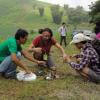





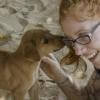
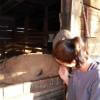


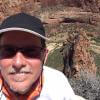


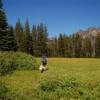


18 July 2016 9:19am
Hi Nazirul,
That is so interesting! My assumption was that you would be using the shell markings as the ID, I hadn't even considered that the facial and fin markings would be a more useful way to diferentiate individuals. I would have thought that getting a look at a turtle's shell would be easier than taking a photo that shows the fins or face in enough detail to analyse - is this not the case? Or do you use the facial scale patterns because the shells do not differ enough between individuals?
I'm also keen to hear more now about your methodology. How to you take your observations? If you're using pattern recognition software and Wildbook, you must be taking photos. Are these remotely triggered (i.e. underwater camera traps), or are they from photos taken by divers or people there monitoring in person?
Kate's link above doesn't seem to be working for me, is there a website we can visit to find out more?
Thanks in advance!
Cheers,
Steph